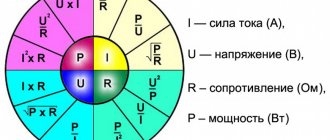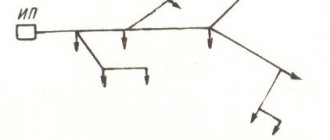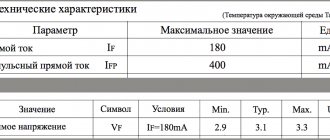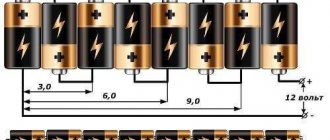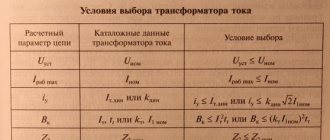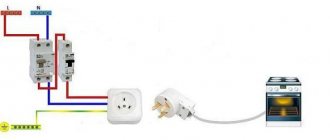Yes, everyone knows that the electric current in the outlet should be 220 volts.” But those who have an idea at least approximately how it is formed and transmitted to the consumer, who can say “in a household electrical network there is a single-phase AC line of 220 volts with a frequency of 50 Hertz” are very few and, most likely, these will be specially trained people who also sometimes do not think about why exactly 220 volts? Why alternating current, why is the network frequency exactly 50 Hertz? But really, why did it happen this way? There were many options. And by the way, going forward, it is worth informing that the above is not the reference standard for the entire planet. Someone took a different route in the construction of electrical infrastructure. We will try to answer these and some other questions in this article.
Where does the voltage come from?
To supply electricity to an outlet, it must be generated somehow. To generate electricity, technologies from the late 19th century are still mostly used - electromagnetic induction, which converts mechanical energy into electrical energy. In other words, generators. The difference between generators is only in how mechanical energy is supplied. Previously, these were bulky steam engines. Over time, hydraulic turbines for running water (hydroelectric power stations), internal combustion engines, and nuclear reactors were added.
The operating principle of the generator is based on magnetic induction. The rotational movement of the generator is converted into electric current. That is, we can say that a generator is the same electric motor, but of reverse action. If voltage is applied to the electric motor, it will begin to rotate. The generator works in reverse. The rotational movement of the generator shaft is converted into electric current. Therefore, in order to rotate the generator shaft, we will need some kind of external energy. It could be steam that spins the turbine, which in turn spins the generator shaft
Operating principle of thermal power plants
or it can be the force of the water flow, which, with the help of a hydraulic turbine, spins the generator shaft, and it, in turn, also generates electric current
Operating principle of hydroelectric power station
Well, or it could even be a windmill
Wind power plant
In short, the principle is the same everywhere.
By the way, a nuclear reactor is not capable of generating energy on its own. In fact, a nuclear power plant is the same primitive steam boiler, where the working fluid is ordinary steam. Yes, today there are other ways to generate electricity, such as the same solar cells, beta-galvanic and isotope nuclear batteries, “mythical” tokomaks. However, the above-mentioned “high-tech” has significant limitations - the prohibitive cost of materials, installation and setup, dimensions and low efficiency. Therefore, it is not worth seriously considering all this as a full-fledged high-power power plant (at least in the next couple of decades).
Voltage drop in the home network
The so-called voltage drop can be fraught with many undesirable consequences. Moreover, it is undesirable both by the residents themselves and by the supplier organization, because it will be the one who will cover all unforeseen expenses. For objective reasons described earlier, power outages can reach record levels.
If there is no desire to correct the defects, this is grounds for filing a claim in court.
What are the consequences of exceeding or significantly reducing the established norms for voltage supply in the house:
- Light bulbs burn out faster;
- This is especially harmful for a refrigerator, washing machine and other electrical household appliances that require powerful and constant voltage;
- The service life of any electrical equipment, including microwaves, toasters, TVs, computers, and so on.
Thus, it becomes obvious that all classes of electrical engineering suffer from severe voltage fluctuations. This influence is especially destructive if the network voltage is low. And the obligation to provide uninterrupted, stable and high-quality current belongs to the organization that supplies it and, according to the contract, must ensure its high-quality service.
Excursion into history
So, the generator at our power plant converts mechanical energy into electrical energy. What's next? In what form and how exactly to transfer energy to the consumer? How to avoid colossal transmission losses?
Amazingly, such a situation actually existed! In the Russian Empire, until the beginning of the 20th century, there was complete confusion. A separate power plant was built next to each “large” consumer of electricity (a factory, the farmstead of a successful merchant, or a hotel for people of noble blood). There were many competing companies providing electrification services and, subsequently, their own electrical equipment tailored only for their network. Each electricity supplier set its own power grid parameters - voltage, frequency. There were even DC power grids! A person who bought, for example, light bulbs from the Lodygin and Co. Electric Lighting Partnership could only use them in the electrical network of the same company. If connected to the General Electric network, this light bulb would immediately fail - the network voltage of this company was significantly higher than necessary, not to mention other parameters.
Only in 1913 did imperial engineers decide to transmit electricity over long distances via overhead wire lines, eliminating the need to build power plants “at every outlet.” On the eve of the coming great war and the surge of patriotism, the authorities began to think about import substitution. Well, just like in our time, after the 2014 crisis). Many small Western firms (except German and French) were financially and legally suppressed; preferences and benefits were given only to domestic partnerships and enterprises. As a result, this led to monopoly in the electricity supplier market and, unwittingly, standardization of electrical network parameters.
Since Berlin and Paris were already electrified by a single power grid with 220 volt alternating voltage, domestic companies also adopted this standard. It was more convenient for people to use electrical appliances of a single type, without worrying that their newfangled electric vacuum cleaner would burn out at a new place of residence due to other parameters of the power grid. There was a complete displacement of many small firms - no one wanted to use their services and their devices, although they were forced to adapt to a single standard of the electrical network. Those same 220 volts AC.
Why AC voltage?
Not so long ago, by historical standards, humanity had a dilemma: which current is better? Variable or constant? This period of time was known as the "War of the Currents." In fact, there were disputes between Nikola Tesla and Edison, the greatest scientist-inventors of the time. Edison was for direct current, and Nikola Tesla was for alternating current. This struggle continued for more than 100 years, even after the death of these great scientists! But still, in 2007, alternating current won the final victory.
The thing is that direct current, when transmitted over long distances, loses its energy by heating the wires. The Joule-Lenz law is to blame here
Q=I2Rt
Where
Q - amount of heat generated (Joules)
I - current flowing through the conductor (Amps)
R - conductor resistance (Ohms)
t - time of passage of current through the conductor (Seconds)
It is not difficult to guess that the more current flows through the wires, and the longer the wires are, the more they will heat up, since the resistance of the wire is expressed by the formula:
wire resistance formula
The second reason was that the DC generator had to use a special design that would allow the removal of electric current from moving windings. To do this, a so-called commutator , to which the generator windings were soldered. The collector was in motion all the time, since it was fixed to the generator shaft itself. The voltage was removed from the commutator using graphite brushes. The same principle is still used in generators and DC motors.
Operating principle of a DC generator
The disadvantage of this design is that over time the brushes and commutator wear out. Therefore, such a generator must be serviced frequently, the brushes must be replaced on time and the commutator must be cleaned. Most often, such a generator has two wires: plus and minus. The more collector plates (lamellas) on such a generator, the cleaner the direct current from such a generator will be. If such a generator has many lamellas and rotates at the same speed, then on an oscilloscope you can see something like this picture of direct current
DC waveform
An alternating voltage generator does not have such disadvantages. Its operating principle is shown below
Working principle of alternator
Currently, it uses three windings spaced 120 degrees apart. One end of each winding is connected to each other, forming the so-called “zero”. In our country, they try to spin such generators at thermal power plants or hydroelectric power stations at a speed of 50 revolutions/sec. Well, or 3000 rpm. That's not a bad speed.) In America, they are turned at 60 rpm. What are revolutions per second? This is the frequency. And frequency, as you remember, is expressed in Hertz (Hz). Therefore, in our sockets the frequency is 50 Hz, in America it is 60 Hz.
Such generators are called three-phase, since they have three phases: A, B, C. In English literature you can see the designation R, S, T or L1, L2, L3. The point where the end of all windings is connected is designated by the letter N (zero).
Alternator
That is, in fact, 4 wires come out of the generator: phases A, B, C and 0, also known as neutral N, which connects one end of each of the three windings.
Alternator windings
When the rotor-magnet rotates, an electric current is created in each winding. If you use an oscilloscope to display oscillograms of three windings at once, you can see something like this:
Three-phase voltage oscillograms
Transmission of electric current over long distances
So, we have received an electric current. Now we need to somehow transmit it over long distances, not forgetting about the Joule-Lenz law: Q=I2Rt. That is, we need to somehow miraculously reduce the current that will flow through the wires, since it is mainly responsible for large losses.
A transformer is ideal for these purposes, but not a simple one, but a three-phase one. This uses a remarkable property of a transformer: if we increase the voltage, then we lower the current, and vice versa, we lower the voltage and increase the current. Therefore, in order to transmit the received electricity over long distances, we need to increase the voltage several times, thereby reducing the current strength by the same number of times. Below in the figure is a diagram of the transmission of electricity from a hydroelectric power station generator to the end consumer, that is, for factories, for electric vehicles and for you and me.
Transfer of electricity from the generator to the final consumer
With hydroelectric power plants, the voltage is increased to several kilovolts, most often to 110 kV. All this is achieved using a three-phase high-voltage step- up transformer (2).
Three-phase high voltage transformer
Next, the high-voltage voltage travels along the high-voltage line (3) and reaches a city or regional center.
High voltage power transmission line
Each regional center or city has its own substation, which already has its own high-voltage step-down transformer (4), which converts a voltage of 110 kV into 10 kV, or 6 kV (5).
Why couldn’t it be possible to immediately pull the wires from the generator? Why was it necessary to increase and then decrease the voltage again? All again due to the Joule-Lenz law. Since the hydroelectric power station is located at a very large distance from electricity consumers, it is necessary to increase the voltage in order to minimize losses due to heating of the wires. As we have already said, the transformer increases the voltage, but at the same time reduces the current strength by the same amount, so losses in wires over long distances are reduced significantly, based on the Joule-Lenz formula Q = I2Rt.
Then, from the substation, the voltage is distributed to transformer “booths”, which can already be seen in every area.
Transformer 6 kV to 380 V
From these “booths” approximately 380 Volts comes out after conversion. But there is one nuance here. Three wires are used everywhere, but most often two wires enter our houses. What's the matter? But the point is that there is such a thing as linear and phase voltage. Line voltage is measured between 3 wires carrying 380 V. They are called phases. That is, roughly speaking, these are the same wires that came out of the generator somewhere else at the hydroelectric power station. But if we take any of the phases and measure the voltage relative to the neutral conductor, that is, relative to zero, then we will have a phase voltage of 220 V. It turns out that ONE phase and ZERO comes into our house. Where do the other phases go? They are evenly distributed among the residents of the house or your area. That is, a different phase may come to your neighbor, but the same zero.
Three-phase power transmission line
What is the current in 220V and more
The value of the passing electricity from the outlet is determined in Amperes, while the output voltage is 220 V. It turns out that the current strength is a physical quantity equal to the ratio of the charge that passes through the conductor in a certain time. If there is no connection to the outlet, then the electrical circuit is considered broken.
Electrical equipment
When the wiring is not protected automatically, the power is under control, so the Ampere value in the outlet is different at a voltage of 220V. The power indicator in this case constantly increases until the electrical equipment fails.
Professionals advise choosing sockets with 16 amperes or more, as they are more reliable; the wiring is made from a 2.5 mm2 cable. When choosing an outlet rated for fewer Amperes, the protection may not work, which often leads to accidents on the line.
Voltage 220 Volt
There are a lot of questions in RuNet specifically about voltage “from the socket”. The most frequently asked question looks like this:
— What is the current in the socket?
Here the question, of course, is posed incorrectly. Current is most often referred to as current strength. It would be more correct to ask the question: “What is the voltage in the outlet?”
In Russia, we have an alternating voltage in our home network with a frequency of 50 Hertz, a maximum amplitude of approximately 310 Volts and an effective voltage of 220 Volts. I think this will be the most detailed answer.
So, now let's figure out what's what.
What does this “outlet current” look like on an oscilloscope? Well, something like this:
Vertically, one cell equals 100 Volts. Therefore, the maximum amplitude Umax will be somewhere around 330 Volts
amplitude voltage value
In theory it should be 310 Volts. Although it is not surprising. Network voltage is rarely stable. Everything, of course, depends on the consumers and the transformer at the power plant that powers them.
When I was still very young, we had a very interesting device next to the TV. There was a scale on it, and in the evening we adjusted the knob so that the scale showed exactly 220 Volts, otherwise the TV refused to work. As I grew older, I realized that it was a manual voltage stabilizer, since it was in the evening that all the neighbors began to “eat” electricity and therefore the network had 190-200 volts. Nowadays, in all televisions and other household appliances, these stabilizers are built right inside the device, and therefore the need for stabilizers has sharply disappeared.
What is the current in the batteries?
A variable current comes out of the outlet as the direction of the flow of electrons changes. This kind of current has different frequency and voltage values. Therefore, in sockets - 220V at 50Hz. It looks more clearly like this: in one second the flow of electrons changes 50 times, while the charges also change from positive to negative.
You may be interested in: Features of capacitor calculation
This is especially noticeable when turning on or supplying electricity to fluorescent lamps. When electrons accelerate, the lamp flickers, which means that the flow is changing. The maximum voltage potential is 220V, at which electrons move.
Batteries
The charge changes with alternating current. It turns out that the voltage is either 100% or 0%. With an indicator of 100%, it is necessary that the wire be of large diameter, and if the charge is not constant, then a wire of small cross-section is sufficient. A large number of volts can be transported through such a conductor, after which the transformer takes in the excess, leaving 220V at the output.
Attention! In batteries or accumulators, the current is constant because the direction of the electrons does not change. Charging is designed to transform it from alternating to constant, in this form it is supplied by batteries.
Galvanic cell
What are phase and zero
220 Volt comes to you through two wires. Sometimes there is also a third yellow-green wire in conjunction with them - this is the ground. This wire is used for safety purposes. Old houses do not have such a wire. The ground in 90% of cases is designated as a yellow-green wire. Other wires may have different colors, but most often they try to mark the zero with a blue wire, and the phase with a bright color. For example, red.
Designation of phase, zero and ground on the wire
So, phase zero flows through the other . Zero is a wire for removing electric current from a phase. Zero does not pose a danger to humans, but it is still better not to experiment! In phase, the voltage changes very quickly, first from some maximum value (for 220 Volts this value is 310 Volts), then drops to zero, and then goes negative and reaches a value of -310 Volts and then again to zero and again to 310 Volt. So, in a second he manages to perform this operation 50 times, since the generator at a hydroelectric power plant, thermal power plant or nuclear power plant rotates at exactly this speed.
oscillogram 220 V

